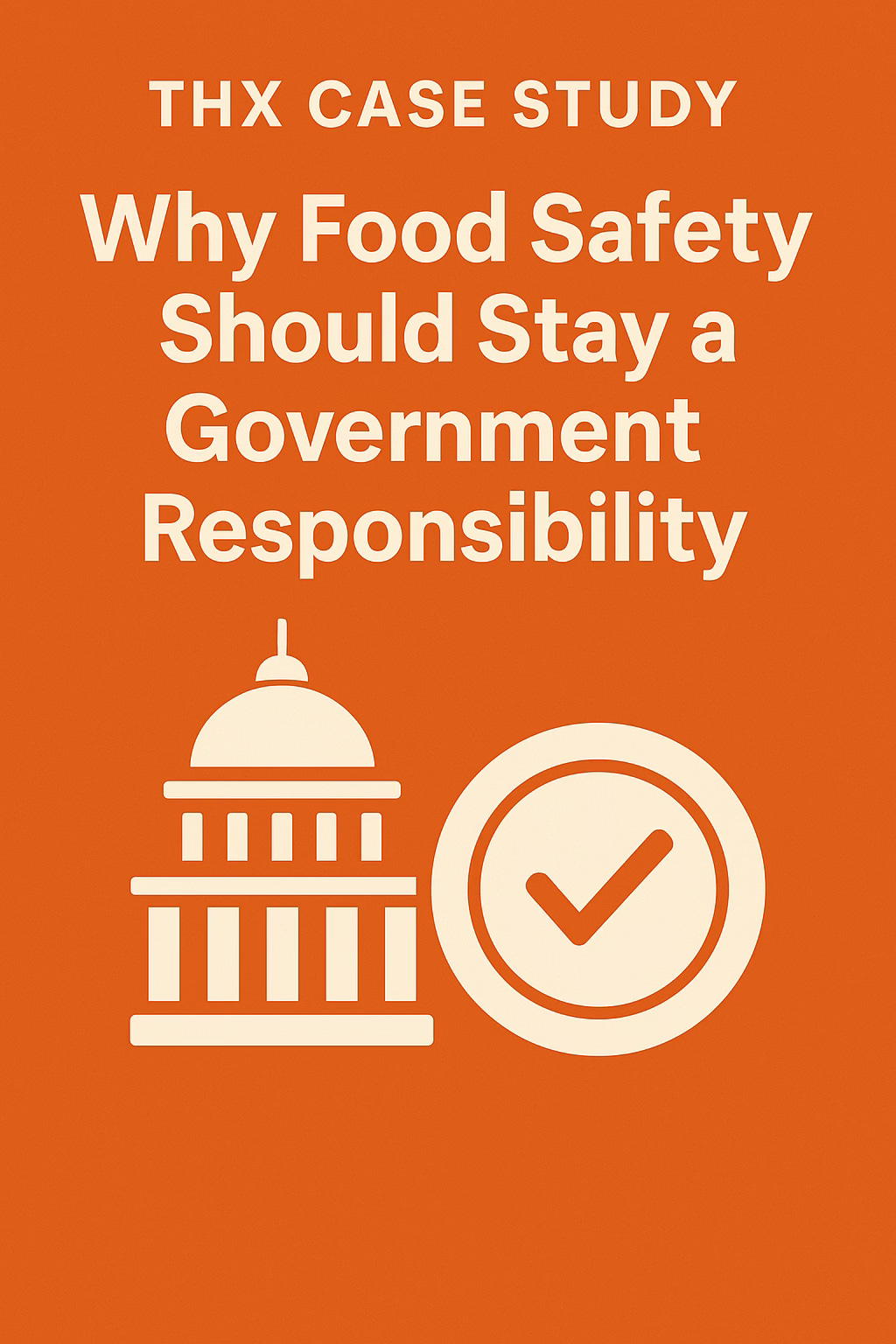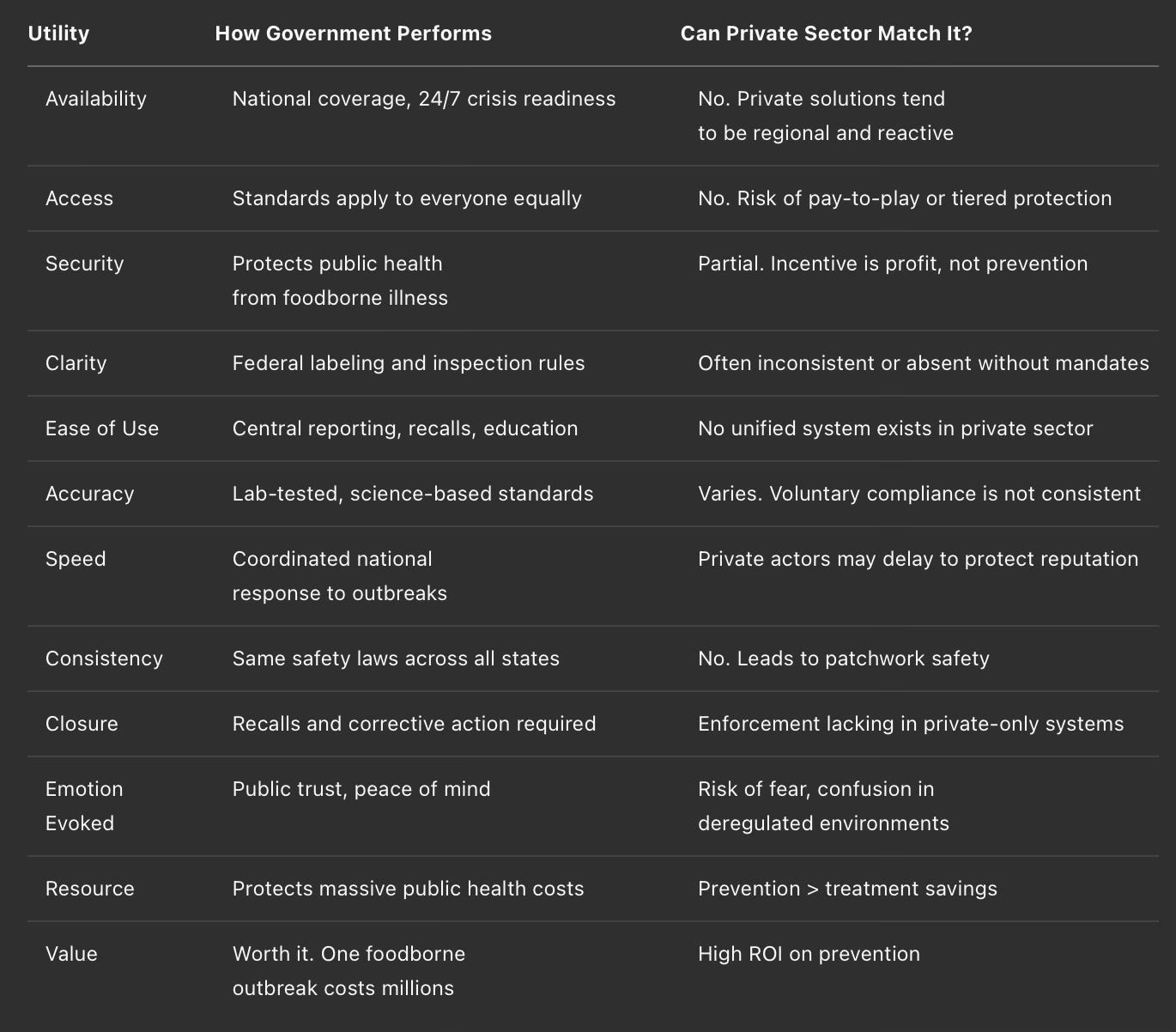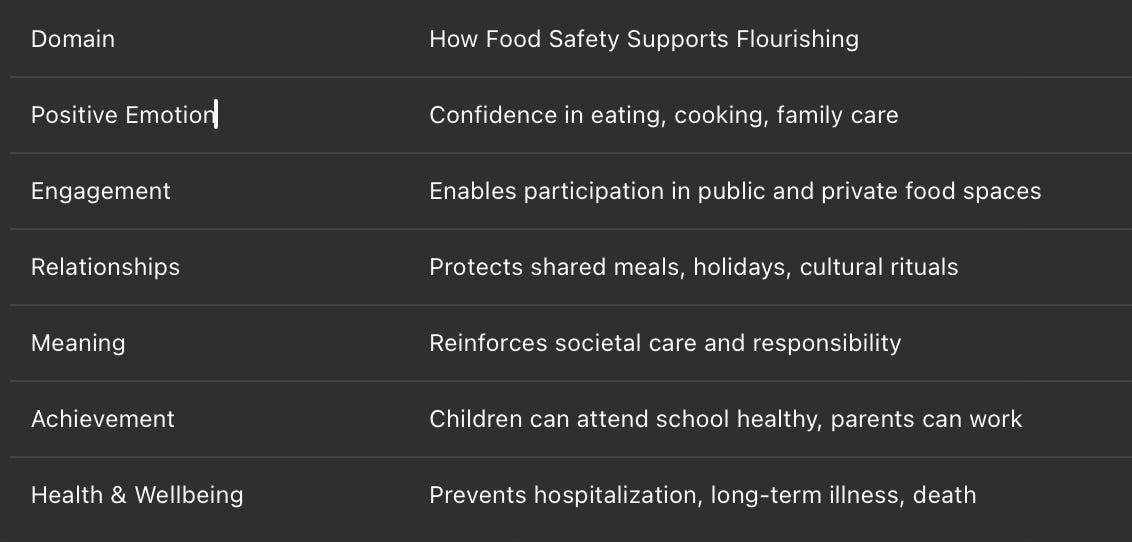Listen to the podcast here
An exploration through the 12 Utilities, PERMAH, Prospect Theory, Admiration Equation, and Micro-Moments.
What’s at Stake
Food safety seems like a given—until it isn’t. Most people in the U.S. take for granted that the food they eat won’t make them sick. That trust is not a happy accident. It’s the product of decades of public investment, regulation, inspection, and crisis response.
But in an era of increasing calls for deregulation, outsourcing, and shrinking government, some have argued that private companies or state-level agencies could do this work better, faster, or cheaper.
Let’s use the THX Frameworks to ask: Should food safety remain a federal responsibility? Or is there a case to scale it back, outsource it, or hand it off?
The 12 Utilities
Verdict: Government delivers high utility across nearly every category. The private sector may play a role, but cannot replace the system without creating gaps.
PERMAH Impact
Food safety underpins public flourishing. Undermining it would ripple across work, family, culture, and trust.
Prospect Theory: What If We Lose It?
The loss of reliable food safety would feel catastrophic. Even a few major outbreaks could erode decades of public trust.
People may overcorrect with fear, avoidance, or hoarding behavior.
Trust lost in food = trust lost in government. And that’s much harder to get back than to maintain.
Admiration Equation
Skill: Lab science, legal enforcement, data tracking = respect for competence
Goodness: It’s a public service with no profit motive
Awe: When a massive recall works quickly, it saves lives quietly
Gratitude: Most people have never thanked a food inspector—but they should
Micro-Moments
You don’t think about food safety when it works—but you never forget when it fails.
A child hospitalized from tainted peanut butter
A holiday ruined by contaminated eggs
A wedding marred by unsafe catering
Government protection ensures those moments are rare.
Additional Context: State-Level, Private Sector, and Global Comparisons
State-Level Efforts:
States like California have additional food safety laws beyond federal requirements. While this can raise the standard locally, it also creates confusion and compliance burdens for producers and distributors across state lines. Federal consistency prevents loopholes and uneven protections.
Private Sector Attempts:
Large grocery chains and food brands (e.g., Walmart, Costco, Tyson Foods) often have internal safety programs and quality assurance labs. But these are motivated by brand protection and not public transparency.
In 2006, the spinach E. coli outbreak triggered major losses for the produce industry. Federal coordination through the FDA was critical to tracing the origin. No private system could have executed that level of containment alone.
Global Comparisons:
In the EU, the European Food Safety Authority (EFSA) coordinates high-level scientific assessments and sets continental policy, similar to the FDA. Their strong regulatory approach has prevented several major outbreaks.
In China, repeated food safety scandals (e.g., melamine in infant formula) led to a massive overhaul of government inspection and transparency systems, underscoring how damaging weak or corrupt oversight can be.
Final Thought
Food safety isn’t an optional service. It’s an invisible infrastructure of trust. It touches every home, every table, every plate. No single company, nonprofit, or state can do what a coordinated federal system can.
This is a clear case where the government should Build and Stay.

Interpretation:
The plate and checkmark evoke the invisible trust infrastructure behind every safe meal. The bold title and burnt-orange background draw urgency to a quiet crisis: if deregulated, food safety failures could multiply. This cover honors the unsung systems—and people—keeping our meals safe.





